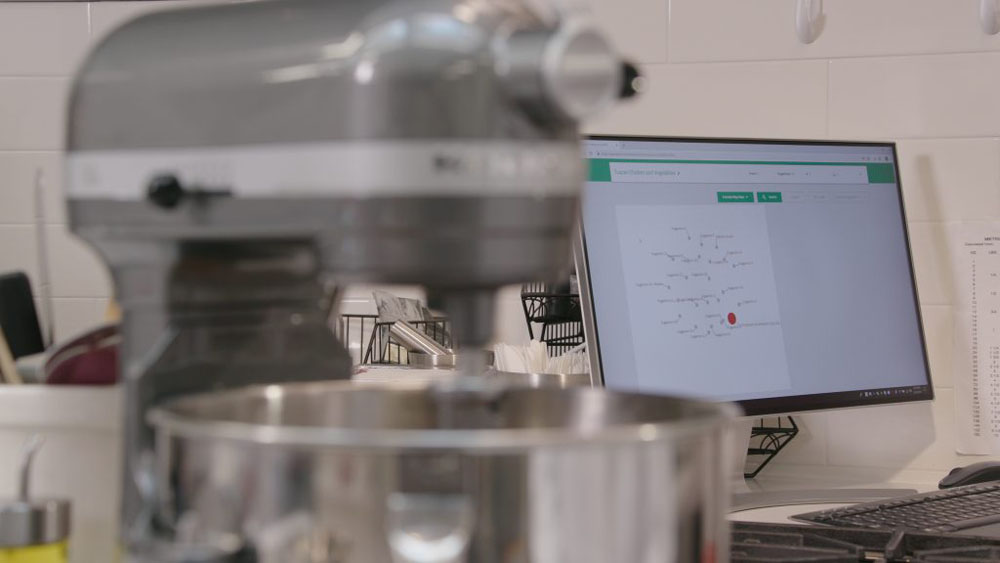Wasabi-flavored caviar crepes, bruschetta tandoori chicken, charcoal ice cream — these all sound like the gastronomic inventions of a highly creative human chef, intent upon taking our tastebuds to unexpected dimensions. But what if artificially intelligent machines could also dream up new, innovative food recipes, as well as improve upon already existing cuisines and food product formulations?
As AI is increasingly being used in fields like healthcare, research and finance, it may very well be possible for AI to lead the way toward novel flavor experiences, as a recent partnership between tech multinational IBM and American spice, marinade and condiment company McCormick & Company is suggesting.
Best known for its AI system Watson, as well as for its recent forays into AI-assisted authentication, interactive design and cognitive computing, IBM’s four-year-long collaboration with McCormick aims to ease the process of enhancing and developing new food products by using algorithms that can quickly synthesize available data on the vast number of possible ingredient combinations — culled over decades of research and taste-testing — in order to generate new flavors and products.
AI Flavor Assistant
As IBM notes in a recent blog post, the conventional process of devising a new food product can be quite time-consuming, sometimes taking months or even years to evolve from the conceptual stage to being finally ready for the market. For starters, the science behind how humans experience the vast spectrum of flavors is complex and not completely understood. Tasting the flavor of a delicious morsel of food doesn’t just occur on the tongue; it also involves other senses like smell and visually appreciating its appearance. Alternatively, taste perception can be genetically influenced and isn’t necessarily restricted to the standard sweet, sour, salty and bitter tastes — for example, we can also detect other possibilities like the savory flavors of meat and potatoes.
So it’s evident that the process of developing new flavors involves a lot of complex variables, and that’s where IBM’s system can help simplify the process. It does so by detecting patterns gleaned from existing flavor formulas, the inventory of raw ingredients, results from consumer taste tests, and even sales data, and learning from these patterns in order to generate new flavor combinations.
In contrast, when confronted with the massive number of possible ingredients and combinations, a human product developer might inadvertently find themselves relying on tried-and-true components and flavor profiles in order to get the job done quickly. These experts often work in teams, drawing upon the collective knowledge of chefs, chemists and other food professionals, refining a concept iteratively many dozens of times until it’s ready for the market.
Moreover, cost targets and even the cultural context of where the product is intended for sale are critical factors too. Thus, having an intelligent assistant that merges this collective expertise will not only streamline the process, but also help human experts find better, more creative and cost-effective solutions quickly, without having to depend on certain mainstays just because they worked in the past.

AI-Generated Novelty
In addition, the AI system could also propose ingredient substitutions, as well as different component ratios in regard to how often they are used in existing products. It can even measure the “novelty” of a new flavor, based on what IBM calls a “derived distance function,” which is described as “the larger the distance between a flavor formula and its nearest neighbors, the more novel the flavor formula is predicted to be.”
“A key part to building an AI system that is an essential tool in the daily workflow of product developers is supporting different degrees of novelty,” explained IBM. “One size doesn’t fit all. In some scenarios, the goal is to optimize a flavor formula by tweaking it to perfection. For instance, there are a multitude of flavor nuances from different vanilla beans sourced from many parts of the world. What is the best combination of vanillas to deliver the desired flavor experience? In other scenarios, the goal is to develop truly novel flavor experience. Here, the variation or distance between ingredients (e.g. vanilla vs strawberry) is likely more significant than the choice within any one ingredient family (e.g. vanilla). Our system learns and uses a distance model to suggest desired flavor formulas.”
Not surprisingly, such a data-driven, pattern-detecting, novelty-generating system could be “generalized” and translated to other fields, such as in the development of new perfume scents, cosmetics, household and industrial products, and even building materials (hopefully of the durable and ecologically friendly kind).
In the meantime, if all goes well, the two companies plan to gradually deploy this new AI-assisted platform in all of McCormick’s laboratories around the world by 2021. For now, we can expect to at least see AI-improved versions of seasoning mixes for Tuscan chicken, bourbon pork tenderloins, and New Orleans-style sausage on the shelves later this year — and likely more mind-blowingly innovative, AI-generated flavors in the near future.
Images: Ho Hyou on Unsplash; IBM and McCormick & Company
Source: How AI Will Help Us Find New, Innovative Flavors of the Future













